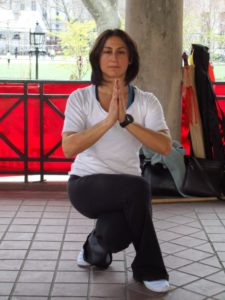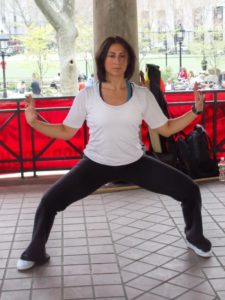***The unbelievably sheer massiveness of the temples and pyramids has left archaeologists, scholars, explorers and plain speculators so skeptical that they attribute the construction to the Lost Continent of Atlantis and Extraterrestials.
But the explanation may be more down-to-earth and accessible: it was human ingenuity and determination that assembled the edifices. Let us not dismiss or underestimate human ability. The ancient Egyptians were capable of such incredible feats of engineering, after all. ***
Soaked from the rain, freezing, aching and tired, I finally got home after a 14-hour flight from Cairo to JFK, a one hour queue through Customs and Immigration (that almost included an interrogation about my fingerprints that seem to be changing all the time I go through screening), a 40 minute taxi race by a Bangladeshi driver (who must have thought he was in a Formula One competition) to PABT in Manhattan, a 2-hour bus ride to Easton and a short drive to 163 Willow Drive.
Egypt this time around was a more informative experience than before when I was a curious tourist exploring the country without any help, not even a map. When I was teaching in Cairo and Heliopolis in early 2000, I did not see much because I was busy giving lessons and treating patients. Amal Elfar, our guide, an Egyptologist from Friendly Planet, gave us the most knowledgeable and sometimes riveting lectures on the tour. She led us through the hieroglyphs and the high reliefs, the different pyramids and temples in Upper and Lower Egypt, the tombs in the Valley of the Kinghs, and the assortment of pharaohs and their political machinations. Now I can review the DVDs and the new literature on this ancient kingdom with a different eye.
Muslim men who seriously apply themselves to prayer all have blackened foreheads from bowing and hitting their heads against the floor (stone, carpet, concrete). Their religiosity is inspiring to me. They pray everywhere they are: under a tree, on a sidewalk or a street corner. Perhaps it is not as bad as the Buddhists on a pilgrimage who have to bow deep, forehead, elbows, knees, and feet on the ground again and again until they reach their destination.
You can spend years staring at the temple walls and not have a hint of what they contain. A relief at Om Kombo temple shows a formula for perfume or essential oil extraction. Another shows a calendar of daily activities. Other reliefs tell stories of battles and celebrations and the characters and legends from millenniums before. Imagine somebody etching these activities on stone thousands of years ago. What was the rest of humanity doing at the time when Egyptians were building pyramids and temples, writing the pyramid texts, constructing formulas for alchemy, tracking the path of death and dying, studying the wisdom of the Emerald Tablet and mapping the heavens? The ancient Egyptians have been the stereotypical villains, maligned in Biblical history, yet they were the source of in science, mathematics, chemistry, alchemy, astronomy and other branches of knowledge.
My companion who has been to many places says that at first she thought China was the best country she had visited but admitted Egypt was the most awesome and impressive country she has traveled in her lifetime. I am grateful to her for joining me in this adventure that involved plenty of walking, up and down precipitous stairs (King Tutankmen’s tomb), wheelchairs, canes and escorts!
Arriving at home, I opened a package. There’s the album of TS Eliot’s poems read by Jeremy Irons. I can look forward to hours listening to the Love Song of J. Alfred Prufrock and the Waste Land, poems I became aware of when I was a 16-year old college student. I used to listen to the reading of the Waste Land at the United States Information Service Thomas Jefferson Library when I was 16. Jeremy Iron’s version is a nostalgic pleasure and an education as well.
*Quote Unquote
Here is a passage from “Divine Proportion: Phi in Art, Nature, and Science” by Priya Hemenway. She studied classical Greek and mathematics at McGill University in Montreal.
A remarkable amount of practical mathematics, some of it extraordinarily sophisticated, was developed by the early agricultural civilizations of Egypt and Mesopotamia and countries farther east. The ways in which these people understood their mathematics was always tightly intertwined with developments in religious and philosophic thought. For the development of our own systems, we look back to the mathematical foundations development of the ancient Greeks. They, in turn, traced all human inventions – from calculus, geometry, astronomy, and dice games to writing – back to the Egyptians. The priests of Egypt began to keep written records between 4000 and 3000 BCE. More than two thousand years later, the poems of Homer were still being circulated through an oral tradition, for the Greeks still had not developed a method of writing.
xxxxx
Proclus reports in his Commentaries on Euclid’s Elements that Eudemus, a disciple of Aristotle, said, “We shall say, following the general tradition, that the Egyptians were the first to have invented Geometry, (that) Thales, the first Greek to have been in Egypt, brought the theory thereof to Greece.”
The importance of Egypt as a source of wisdom cannot be overestimated. The Temple of Waset (present-day Luxor), the world’s first university, known as “the septer,” was built during the reign of Amenhotep III (about 1391 BCE). At its zenith it educated 80,000 students. Thales of Miletus, Plato, Aristotle, Socrates, Euclid, Pythagoras, Hypocrates, Archimedes, and Euripides all studied there. The Greek St. Clement of Alexandria once said that if you were to write a book of 1000 pages, you would not be able to put down the names of all the Greeks who went to Kemet. (Kemet is the name the Egyptians gave their own country; the Greeks called it Egypt.”


Here is another quote:
“The little-known yet powerful Western esoteric tradition is the major influence underpinning many of the significant events that contributed to the development of European culture and civilization. Despite, or perhaps because of, its hidden nature, it exerted a seminal influence on the thinking of the builders of the great cathedrals, on leading teachers in ecclesiastical schools, on philosophers, playwrights and poets such as Shakespeare, Goethe, Blake and WB Yeats, on artists and Renaissance giants such as Leonardo da Vinci and Michelangelo, and indirectly on every generation of European Christendom up and including today ….”
Tim Wallace-Murphy and Marylin Hopkins, “Rosslyn: Guardian of the Secrets of the Holy Grail”
* I told my friend Karen Borla, acupuncturist extraordinary, about my last day in Cairo:
If I had a choice I would have stayed at Le Meridien Hotel longer. They had such a great spread at breakfast — hummus, babaganoush, stuffed grape leaves, dates, fig jelly, lentil soup, 10 types of bread, black honey, honey dripping from a honeycomb, several types of olives and cheese, etc. The best breakfast in the world.
I thought about you when I saw the desserts!
Rene
Karen, who made Middle Eastern pastries on Christmas, replied,
“Wow! That sounds like my kind of breakfast!! Did you try the za’tar bread or the sweet sesame bread? (Khobz bi sumsum ). There is also ftayirbil- flayfli which is bread with red peppers and nuts. I used to make them long ago. My favorite though is the sweet anise milk breads called ka’ik. I will make them for you some time. They are sooooo good!”
I said, “ I didn’t know their names but I tried a lot of the bread although I am supposed to avoid carbo. The breads lay in a heap on one table into the next one. I smeared them with everything — fig jelly and jams, hummus, babaganoush, black and white honey, and others. I had yogurt, juices (mango, guava, pineapple), soups, pomegranate seeds, persimmons, smoked herring and mackerel, etc, etc. No, I did not take photos of the food to pot on facebook or twitter account (I don’t have any) to share with — and brag to — my friends and relatives.”
Who was it who said, “Eat breakfast like a king, lunch like a queen and dinner like a pauper”? Well, at the hotels where we stayed, even on the cruise up the Nile, you can eat like a Pharaoh!